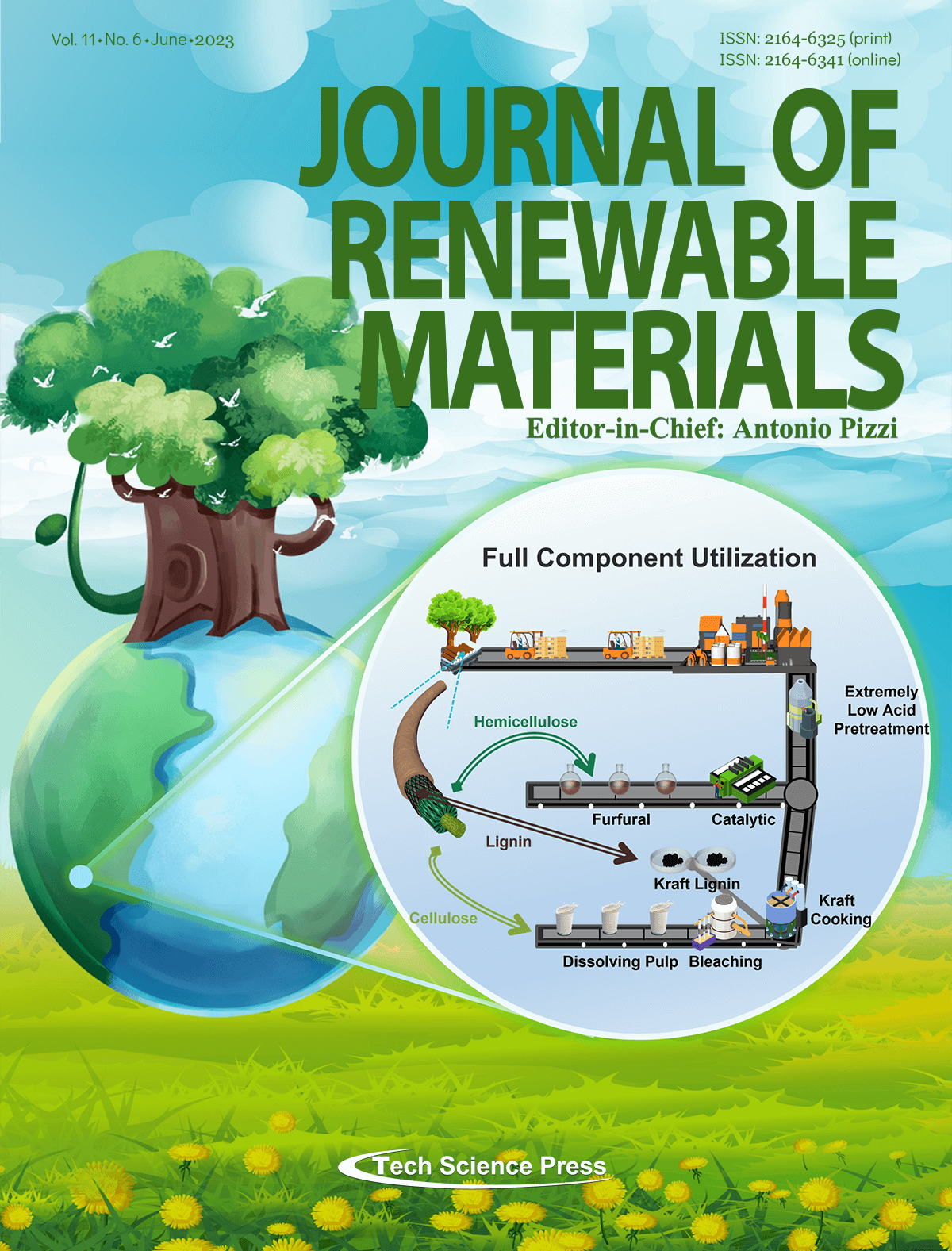The Study on Bamboo Microfibers Isolated by Steam Explosion and Their Comprehensive Properties
Qiushi Li1,2,#, Ronggang Luo1,2,#, Yu Chen3, Jinhui Xiong3, Bei Qiao1, Xijuan Chai1,2, Linkun Xie1,2, Juan Wang3, Lianpeng Zhang1,2,*, Siqun Wang4, Guanben Du1,2, Kaimeng Xu1,2,*
Journal of Renewable Materials, Vol.11, No.6, pp. 2809-2822, 2023, DOI:10.32604/jrm.2023.026184
- 27 April 2023
Abstract To overcome the shortage of wood resources as well as to develop novel natural fibers materials, the Chimonobambusa quadrangularis (CQ) and Qiongzhuea tumidinoda (QT) planted in Southwest China were effectively isolated by the steam explosion (SE). The fine and uniform bamboo microfibers derived from CQ and QT were
obtained, and their smallest average widths were 12.62 μm and 16.05 μm, respectively. The effects of steam explosion on the micro-morphology, chemical composition, thermal stability, crystallinity, surface wettability, and
mechanical properties of bamboo microfibers were comprehensively investigated. The results showed that the
relative content of cellulose in bamboo microfibers More >
Graphic Abstract
